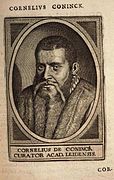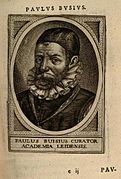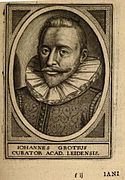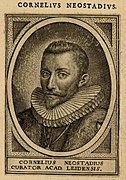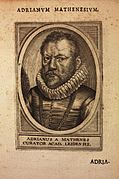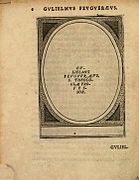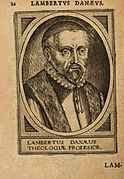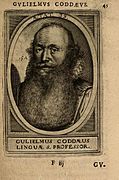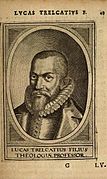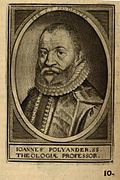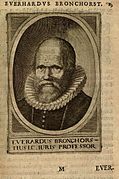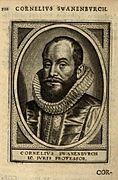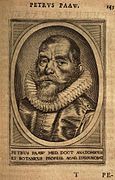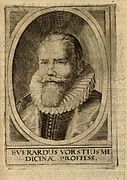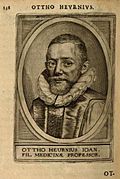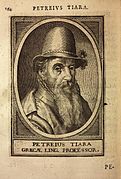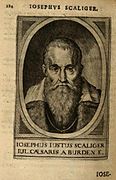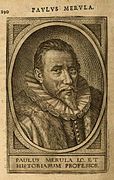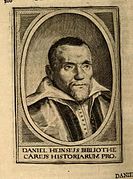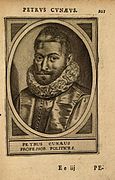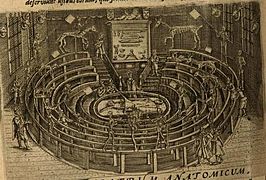
Hugo Grotius, also known as Huig de Groot and Hugo de Groot, was a Dutch humanist, diplomat, lawyer, theologian, jurist, statesman, poet and playwright. A teenage prodigy, he was born in Delft and studied at Leiden University. He was imprisoned in Loevestein Castle for his involvement in the intra-Calvinist disputes of the Dutch Republic, but escaped hidden in a chest of books that was transported to Gorinchem. Grotius wrote most of his major works in exile in France.

Jacobus Arminius, the Latinized name of Jakob Hermanszoon, was a Dutch theologian during the Protestant Reformation period whose views became the basis of Arminianism and the Dutch Remonstrant movement. He served from 1603 as professor in theology at the University of Leiden and wrote many books and treatises on theology.

The University of Franeker (1585–1811) was a university in Franeker, Friesland, the Netherlands. It was the second oldest university of the Netherlands, founded shortly after Leiden University.

Conrad Vorstius was a German-Dutch heterodox Remonstrant theologian, and successor to Jacobus Arminius in the theology chair at Leiden University. His appointment, and the controversy surrounding it, became an international matter in the political and religious affairs of the United Provinces during the Twelve Years' Truce, supplying a pretext for the irregular intervention of King James I of England in those affairs. Vorstius published theological views which were taken to show sympathy with the Socinians, and was declared a heretic at the Synod of Dort in 1619.
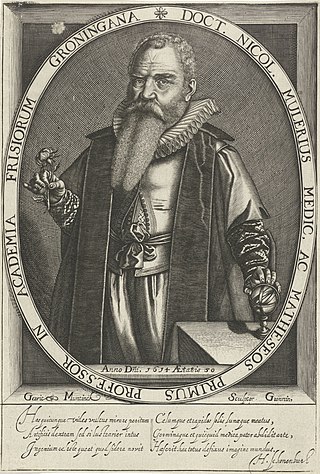
Nicolaus Mulerius was a professor of medicine and mathematics at the University of Groningen.

Aubert le Mire, Latinized Aubertus Miraeus was an ecclesiastical historian in the Spanish Netherlands.
Johannes a Leydis or Jan Gerbrandszoon van Leiden was a Dutch chronicler from the 15th century. A Leydis died in 1504.

Sibrandus Lubbertus (c.1555–1625) was a Dutch Calvinist theologian and was a professor of theology at the University of Franeker for forty years from the institute's foundation in 1585. He was a prominent participant in the Synod of Dort (1618–1619). His primary works were to counter Roman Catholic doctrine and to oppose Socinianism and Arminianism.

Johannes Heurnius was a Dutch physician and natural philosopher.

Antonius Walaeus was a Dutch Calvinist minister, theologian, and academic.
Samuel Naeranus (1582–1641) was a Dutch Remonstrant minister and neo-Latin poet, exiled in 1619 after the Synod of Dort.
Matthew Slade (1569–1628) was an English nonconformist minister and royal agent, in the Netherlands by 1600 and active there in the Contra-Remonstrant cause.
Ordinum Hollandiae ac Westfrisiae pietas is a 1613 book on church polity by Hugo Grotius. It was the first publication of Grotius, a prominent jurist and Remonstrant, concerned with the Calvinist-Arminian debate and its ramifications, a major factor in the politics of the Netherlands in the 1610s. The Ordinum pietas, as it is known for short, gave a commentary on the Five Articles of Remonstrance of 1610 that were the legacy of the theological views of Jacobus Arminius, who died in 1609.

Jacobus Taurinus was a Dutch preacher and theologian, a main supporter of the Remonstrants and polemical writer in their cause.
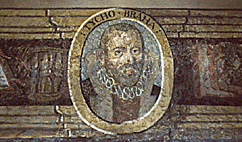
The painted frieze at the Bodleian Library, in Oxford, United Kingdom, is a series of 202 portrait heads in what is now the Upper Reading Room. It was made in 1619, and the choice of worthies to include was advanced for its time, featuring Copernicus and Paracelsus as well as Protestant reformers. The portraits have been attributed to the London guild painter Thomas Knight; they were taken from at least ten different sources, according to current views.

Johannes Antonides van der Linden (1609–1664) was a Dutch physician, botanist, author and librarian. He was born on 13 January 1609 in Enkhuizen.
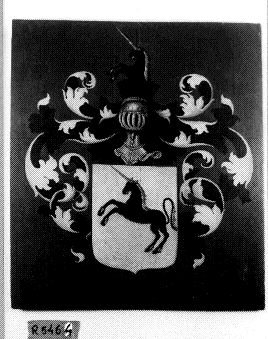
Cornelis van der Mijle was a Dutch politician and diplomat in the service of the Dutch Republic and a regent of Leiden University. He was the son-in-law of Johan van Oldenbarnevelt.








